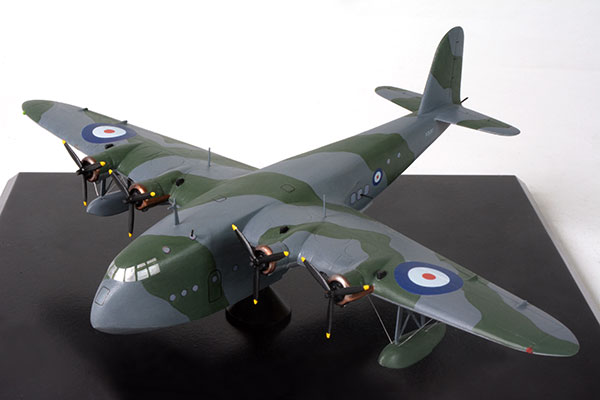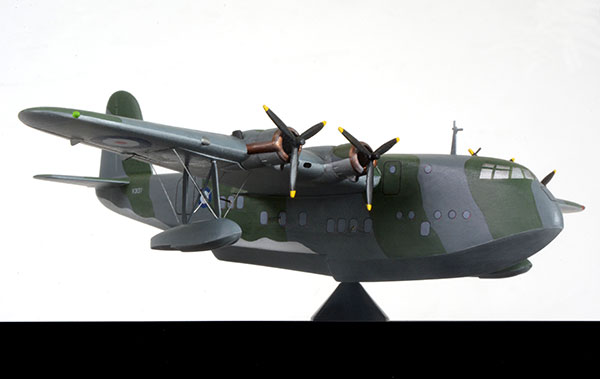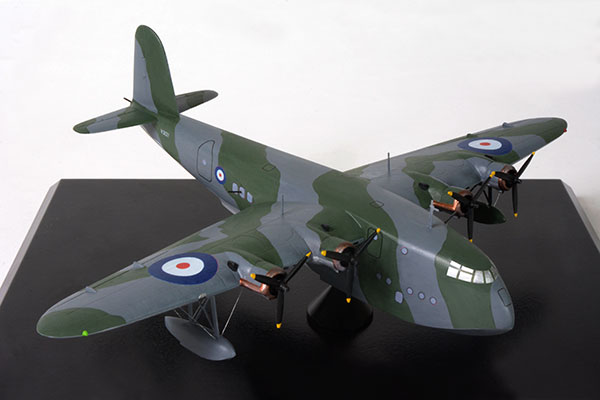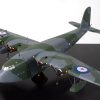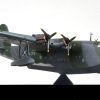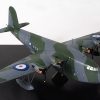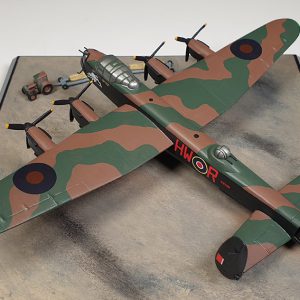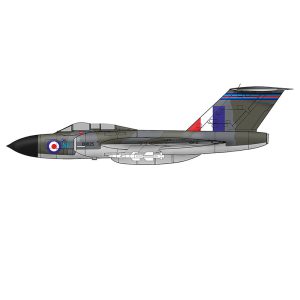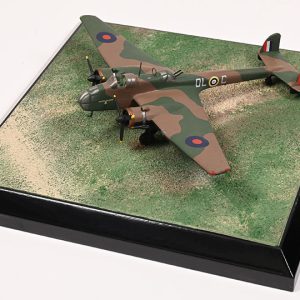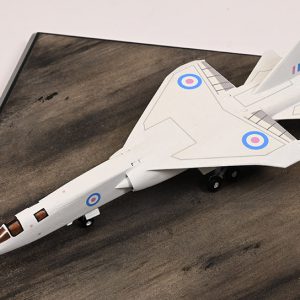Short S.30 ‘C’ Class Empire Flying Boat
RAF Coastal Command CABOT V3137
Bodø, Norway, May 5th / 6th 1940
Few aircraft can capture the spirit of the ‘Golden Age of Flight’ like the empire flying boats of the late 1930s. They were built as a result of the British government stating that from early 1937 all letters dispatched from the UK to the Empire should be delivered wherever possible without surcharge. To meet the target of 2,000 tons of mail per year and to make the enterprise profitable Imperial Airways approached Short Brothers to design a new flying boat. 14 were ordered without delay, this was quickly increased to 28 aircraft.
The new Short S.23 flying boats were given the title ‘C-Class’ and all were given names beginning with the letter C. Powered by four nine cylinder Bristol Pegasus XC radial engines the S.23 was originally configured to carry 24 passengers and 3000 lbs of mail. Later the mail load was increased by 1000lbs and the passengers reduced to 17. A seaplane base at Hythe was built specifically for the C-Class flying boats to operate from as a global base. The Empire Air Mail Service (EAMS) could now be established.
The first S.23 ‘CANOPUS’ made its maiden flight on July 4th 1936 with the first mail flights taking place on the 29th of June 1937 when G-ADVE ‘CENTURION’ took off with 3500lbs of mail for Sudan and East and South Africa. By the start of 1938 S.23s were flying to Palestine, Burma, Ceylon, and Malaya. By the beginning of July that year this was extended to Australia, New Zealand and Western Samoa. C-Class flying boats carried their passengers in the luxury of the day and served a full menu for breakfast lunch and dinner. Playing cards, crosswords, jigsaw puzzles, books, childrens magazines, games and sunglasses were also available in flight.
The long range capability of the Short S.30 ‘C-Class’ led to the RAF pressing ‘CABOT’ (V3137) and ‘CARIBOU’ (V3138) into service, initially with ASV radar although this was soon removed. The two Short S.30 ‘C-Class’ were stripped and converted to transport aircraft with the addition of seven Vickers K guns for special missions to Norway. A dummy gun – believed to be a length of broom stick painted black was fitted in the tail refueling cup. They were to transport radar equipment to Norway and remain for ten days to assist the RAF in the search for possible airfield sites. Departing from Invergordon the two aircraft arrived at Bodø in Norway on the 5th of May 1940 at 09.10. It is suspected they were spotted on route, as soon after arriving they were attacked be a Heinkel He115 floatplane. Further attacks by a Do 17 and Ju 88 finished off the two S.30s despite the efforts of the aircrews and Norwegian sailors to save the aircraft. Even going to the extent of covering the high visibility red white and blue roundels with blankets. G-AETY ‘CLIO’ (AX659) and G-AEUD ‘CORDELIA’ (AX660) were purchased by the Air Ministry soon after the loss of the two Short S.30 ‘C-Class’ as was one of the later G-Class. Learning the lesson of ‘CABOT’ and ‘CARIBOU’ these replacements were fitted with turrets and low visibility red and blue roundels. Based at Bowmore on Islay off the west coast of Scotland for convoy protection and transport. AX659 flew its first convoy protection patrol (Convoy 0G0.60) on 27th April for 8 hours and 14 minutes. After serving with 201 Squadron RAF for a year ‘CLIO’ was lost in a crash landing at Loch Indal on August 22nd 1941 No further ‘C-Class’ flying boats were used by the RAF as the Short Sunderland was now establishing itself as invaluable to Coastal Command going on to help defeat the U-boat menace in the ‘Battle of the Atlantic’.
Although none of the S.23 ‘C-Class’ flying boats survive today their legacy in the Sunderland cannot be understated when, in the ‘Battle of the Atlantic’ they helped defeat the U-boat menace.


